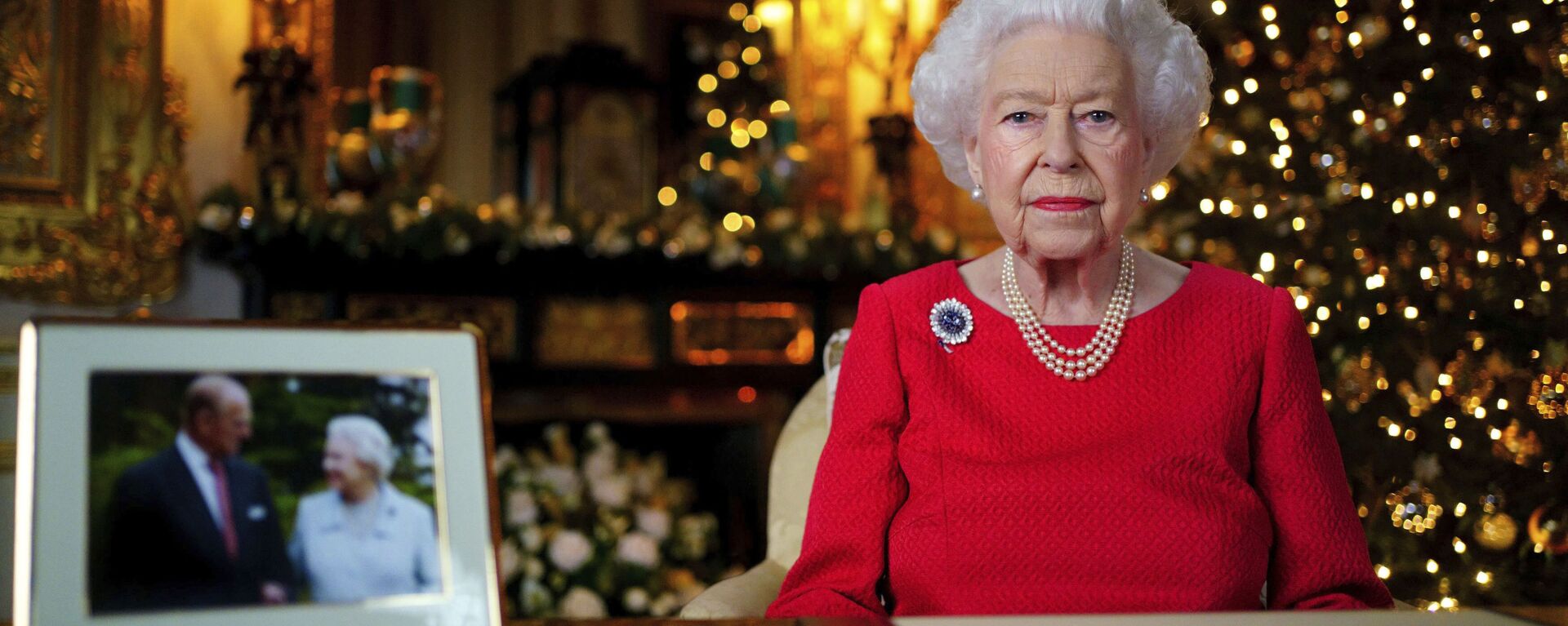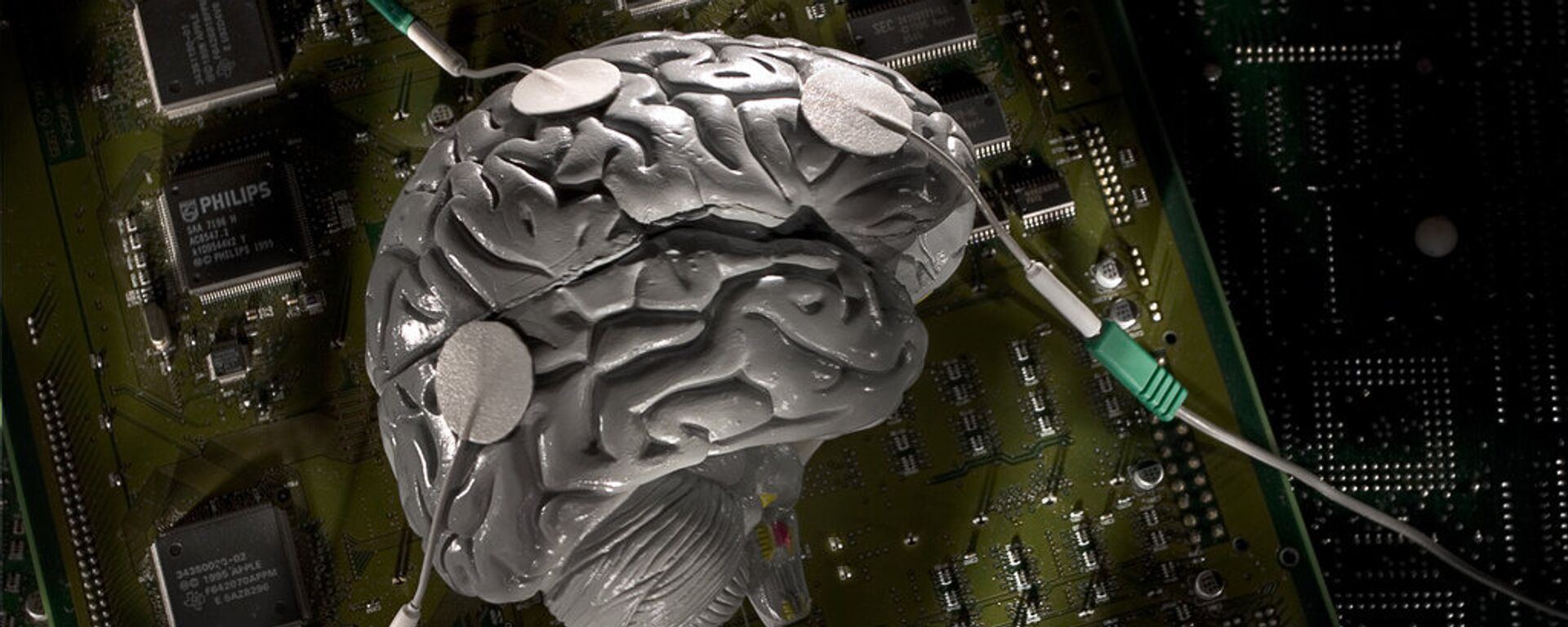https://sputnikglobe.com/20220527/cynical-con-or-true-art-robots-platinum-jubilee-queen-elizabeth-ii-portrait-draws-mixed-response-1095817834.html
‘Cynical Con’ or True Art? Robot’s Platinum Jubilee Queen Elizabeth II Portrait Draws Mixed Response
‘Cynical Con’ or True Art? Robot’s Platinum Jubilee Queen Elizabeth II Portrait Draws Mixed Response
Sputnik International
Ai-Da has been billed by the team of programmers, roboticists, art experts and psychologists that created her in 2019 as “the world’s first ultra-realistic... 27.05.2022, Sputnik International
2022-05-27T08:31+0000
2022-05-27T08:31+0000
2023-05-28T15:19+0000
queen elizabeth ii
jubilee
ai
robot
united kingdom (uk)
https://cdn1.img.sputnikglobe.com/img/07e6/05/1b/1095817371_0:16:696:408_1920x0_80_0_0_0e4edc06fd16ac85b3cf21ba595104dc.jpg
A robot artist going by the name of Ai-Da has painted a portrait of Queen Elizabeth II to mark her Platinum Jubilee. “Algorithm Queen” was unveiled on Friday and described as a tribute to “an amazing human being”.It's certainly a good likeness in that it is recognisably the 96-year-old monarch: the pearls are there as well as the trademark colourful outfit and elegant hat. And the expression on the face is a familiar blend of charm and determination.However, not everyone was bowled over by the robot’s brushwork.Jonathan Jones, art critic for The Guardian, said the painting was “yet another example of the cynical, transparent con that is [Artificial Intelligence] art”.According to the critic, the portrait depicted the Queen’s eyes as possessing “a vacant, not quite human look".“The mixture of leaden accuracy and, at the same time, complete lack of emphasis, feeling or conviction in Ai-Da’s depiction of Her Maj is a telling glimpse of the limits of the AI ‘art’ genre. The machine records, but does not see. Because it has no conscious mind, let alone emotions,” he stated.Ai-Da, who is referred to as “the world’s first ultra-realistic humanoid robot artist” by the team of collaborating programmers, roboticists, art experts and psychologists who completed her in 2019, said on Friday:Aidan Meller, one of the robot’s creators, believed that the first portrait of the monarch by a robot offered an opportunity to reflect on “all that has changed during the Queen’s life” since her coronation in 1953.Ai-Da was named in honour of computing pioneer Ada Lovelace, an English mathematician and writer known for her work on Charles Babbage's proposed mechanical general-purpose computer, the Analytical Engine.The robot/artist said that unlike human artists she does not experience emotions, but “it is possible to train [a] machine-learning system to learn to recognise emotional facial expressions”.Ai-Da, who is regularly updated to keep up to date with advances in AI technology, last month held her first solo exhibition at the 2022 Venice Biennale.
https://sputnikglobe.com/20220527/queen-elizabeth-ii-releases-private-home-videos-to-mark-platinum-jubilee-1095813957.html
https://sputnikglobe.com/20220408/elon-musk-other-billionaires-talk-merging-man-and-machine-1094603880.html
united kingdom (uk)
Sputnik International
feedback@sputniknews.com
+74956456601
MIA „Rossiya Segodnya“
2022
News
en_EN
Sputnik International
feedback@sputniknews.com
+74956456601
MIA „Rossiya Segodnya“
Sputnik International
feedback@sputniknews.com
+74956456601
MIA „Rossiya Segodnya“
queen elizabeth ii, jubilee, ai, robot, united kingdom (uk)
queen elizabeth ii, jubilee, ai, robot, united kingdom (uk)
‘Cynical Con’ or True Art? Robot’s Platinum Jubilee Queen Elizabeth II Portrait Draws Mixed Response
08:31 GMT 27.05.2022 (Updated: 15:19 GMT 28.05.2023) Ai-Da has been billed by the team of programmers, roboticists, art experts and psychologists that created her in 2019 as “the world’s first ultra-realistic humanoid robot artist".
A robot artist going by the name of Ai-Da has painted a portrait of Queen Elizabeth II to mark her
Platinum Jubilee. “Algorithm Queen” was unveiled on Friday and described as a tribute to “an amazing human being”.
It's certainly a good likeness in that it is recognisably the 96-year-old monarch: the pearls are there as well as the trademark colourful outfit and elegant hat. And the expression on the face is a familiar blend of charm and determination.
However, not everyone was bowled over by the robot’s brushwork.
Jonathan Jones, art critic for The Guardian, said the painting was “yet another example of the cynical, transparent con that is [Artificial Intelligence] art”.
“This delusion works by deliberately ignoring the huge gap between the present state of machine learning and the dream of true AI, which would pass the Turing test and match the complexity of the human mind. Ai-Da is not an artist because she – or rather it – has no independent consciousness,” he was cited as saying.
According to the critic, the portrait depicted the Queen’s eyes as possessing “a vacant, not quite human look".
“The mixture of leaden accuracy and, at the same time, complete lack of emphasis, feeling or conviction in Ai-Da’s depiction of Her Maj is a telling glimpse of the limits of the AI ‘art’ genre. The machine records, but does not see. Because it has no conscious mind, let alone emotions,” he stated.
Ai-Da, who is referred to as “the world’s first ultra-realistic humanoid robot artist” by the team of collaborating programmers, roboticists, art experts and psychologists who completed her in 2019, said on Friday:
“I’d like to thank Her Majesty the Queen for her dedication, and for the service she gives to so many people. She is an outstanding, courageous woman who is utterly committed to public service.”
Aidan Meller, one of the robot’s creators, believed that the first portrait of the monarch by a robot offered an opportunity to reflect on “all that has changed during the Queen’s life” since her coronation in 1953.
Ai-Da was named in honour of computing pioneer Ada Lovelace, an English mathematician and writer known for her work on Charles Babbage's proposed mechanical general-purpose computer, the Analytical Engine.
The robot/artist said that unlike human artists she does not experience emotions, but “it is possible to train [a] machine-learning system to learn to recognise emotional facial expressions”.
Ai-Da, who is regularly updated to keep up to date with advances in
AI technology, last month held her first solo exhibition at the 2022 Venice Biennale.



